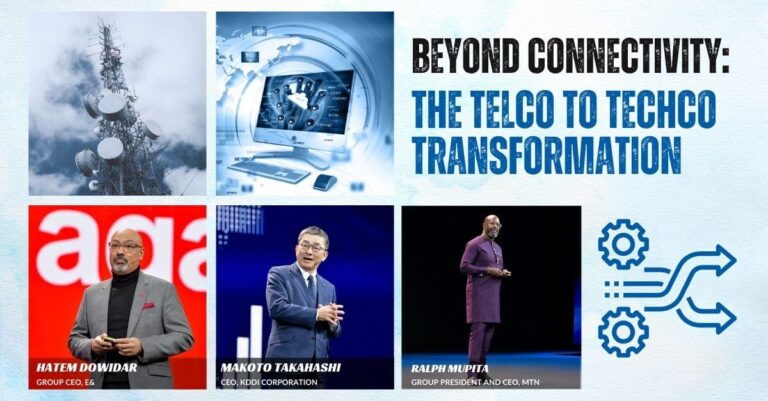Global Shifts: The Intersection of Geopolitics and Technology
In a world defined by dramatic transformations, we delve into the seismic shifts reshaping our politics, economy, and culture—uncovering how these profound changes are redefining the very foundations of our global landscape. As nations compete for dominance in emerging technologies, the global order is undergoing an unprecedented rewiring.
At the forefront of this transformation is the intense technological rivalry between China and the United States. The recent session on “The Geopolitics of Technology” brought together leading experts to explore these shifting power dynamics and the implications for global trade, economic security, and technological innovation. The discussion covered the strategic importance of semiconductors, the geopolitical tensions surrounding artificial intelligence (AI), and the broader economic consequences of protectionist policies.
Moderated by Jason Karaian, Deputy Business Editor at The New York Times, the panel featured esteemed speakers: Keyu Jin, global economist and author affiliated with Harvard University; Jerry Sheehan, Director of the Directorate for Science, Technology & Innovation at the OECD; and Gregory C. Allen, Director of the Artificial Intelligence (AI) Governance Project at the Center for Strategic and International Studies (CSIS). Their insights provided a deep dive into the challenges and opportunities arising from the global race for technological supremacy.
The Global Trade Order and Technological Competition
Sweeping U.S. tariffs on China, Canada, and Mexico signal a potential restructuring of global trade, placing technology at the center of economic disputes. As countries strive to maintain a competitive edge, the balance between cooperation and competition is shifting towards heightened rivalry. The race for leadership in AI, semiconductors, and quantum computing has become a critical aspect of national security, economic strategy, and geopolitical maneuvering.
Keyu Jin noted that the imposition of tariffs and export restrictions by the U.S. has triggered significant unintended consequences. Rather than weakening China’s global trade position, these measures have accelerated the country’s efforts to reduce dependence on the U.S. and strengthen domestic technological capabilities. While the U.S. share of global exports has declined, China and other emerging economies have found new opportunities for diversification.
A crucial outcome of this shift is the emergence of regional economic blocs. Nations are increasingly aligning based on shared strategic interests, leading to new trade agreements and investment patterns. This shift away from a purely efficiency-driven globalization model signals the rise of a more protectionist, politically driven global economic landscape.
Semiconductors: The New Oil of the 21st Century
Semiconductors are the backbone of modern technology, powering everything from AI to military systems. Gregory Allen emphasized that the geopolitical battle over semiconductor supremacy mirrors the historical competition for energy resources. The U.S. and China are both acutely aware of the strategic importance of chip manufacturing, leading to policies designed to restrict technological access and ensure domestic production capacity.
The 2022 U.S. export controls on AI chips, semiconductor technology, and manufacturing equipment marked a stark departure from previous trade policies. The move was driven by concerns over national security and China’s growing capabilities in AI. The Biden administration’s restrictions on semiconductor exports have reshaped global supply chains, forcing China to accelerate its self-sufficiency efforts.
Jerry Sheehan of the OECD highlighted that the pandemic-driven semiconductor shortage exposed the vulnerabilities of existing supply chains. The OECD has been working with governments to develop strategies for diversifying semiconductor production and reducing reliance on a small number of key players. This includes investment in alternative production hubs and policies aimed at mitigating the risks of economic coercion through supply chain dominance.
China’s response to these restrictions has been swift, with the government prioritizing domestic semiconductor development and research in emerging technologies. This reaction underscores the broader trend of nations seeking technological self-reliance in an era of increasing economic fragmentation.
Artificial Intelligence and the Global Power Struggle
The rapid advancement of AI has further complicated geopolitical relationships, as nations recognize its potential to revolutionize industries and reshape military capabilities. AI is no longer just a commercial asset but a national security priority.
Gregory Allen pointed out that the exponential pace of AI development is causing widespread concern among policymakers. The ability to create AI systems that can perform at 10,000 times the efficiency of current models could significantly alter the balance of power. The October 7, 2022, U.S. decision to impose new AI chip export controls was a reflection of these concerns, representing a fundamental shift in policy.
China’s deep investments in AI research, exemplified by breakthroughs like DeepSeek, have demonstrated its growing prowess in the field. While export controls may slow down certain AI developments, Chinese firms are finding innovative ways to optimize their computing resources. The success of DeepSeek, which achieved high performance with a fraction of the computing power used by Western counterparts, showcases China’s ability to adapt and innovate despite restrictions.
At the same time, Europe is seeking to carve out its own space in AI development. Jerry Sheehan noted that recent European initiatives aim to bolster AI research and deployment within the region. While Europe has traditionally been strong in AI regulation, there is now a concerted effort to ensure that innovation keeps pace with the U.S. and China.
The Future of Multilateralism in a Divided World
With global trade and technology becoming increasingly polarized, the role of multilateral organizations is evolving. The OECD has been actively working on strengthening cooperation in technology policy, particularly in areas like semiconductor supply chains and AI governance.
However, multilateralism is facing headwinds. Sheehan acknowledged that the political climate in many countries is shifting towards protectionism, with national security concerns often taking precedence over economic cooperation. Yet, there are still opportunities for collaboration, particularly in setting global AI standards and addressing ethical concerns in technology development.
Emerging economies are also playing a crucial role in shaping the future of global trade and technology. Countries in Southeast Asia, the Gulf region, and Africa are increasingly becoming influential players, leveraging their positions as neutral intermediaries in the U.S.-China competition. Their ability to attract investment and drive innovation outside the dominant Western-Chinese paradigm may be one of the defining economic trends of the next decade.
Conclusion: Preparing for an Uncertain Future
The panel discussion underscored the fundamental shifts taking place in global geopolitics and technology. The coming years will see increased competition, realignment of economic alliances, and the growing role of emerging technologies in national security.
For businesses and policymakers, the key takeaways are clear:
- Diversification is essential. With supply chains and trade relationships becoming more volatile, companies and governments must build resilience by diversifying markets and production capabilities.
- Geopolitics will shape innovation. AI, semiconductors, and other emerging technologies are now central to global power struggles, meaning that policy decisions will directly impact technological development and access to resources.
- Regional economic blocs are on the rise. Nations are forming new strategic alliances, reshaping the traditional models of globalization.
- Multilateral cooperation remains crucial. While competition is intensifying, opportunities for international collaboration in research, regulation, and trade still exist.
As we move forward, the interplay between technology and geopolitics will continue to redefine our world. Those who can navigate this evolving landscape—whether businesses, policymakers, or investors—will be best positioned to thrive in an era of global shifts.
Session Moderators
Jason Karaian | The New York Times, London Bureau, Deputy Business Editor
Session Speakers
Keyu Jin | Harvard University, Global economist and author, Harvard University, visiting scholar
Jerry Sheehan | OECD, Director, Directorate for Science, Technology and Innovation
Gregory C. Allen | Center for Strategic & International Studies, Director, Wadhwani AI Center

























